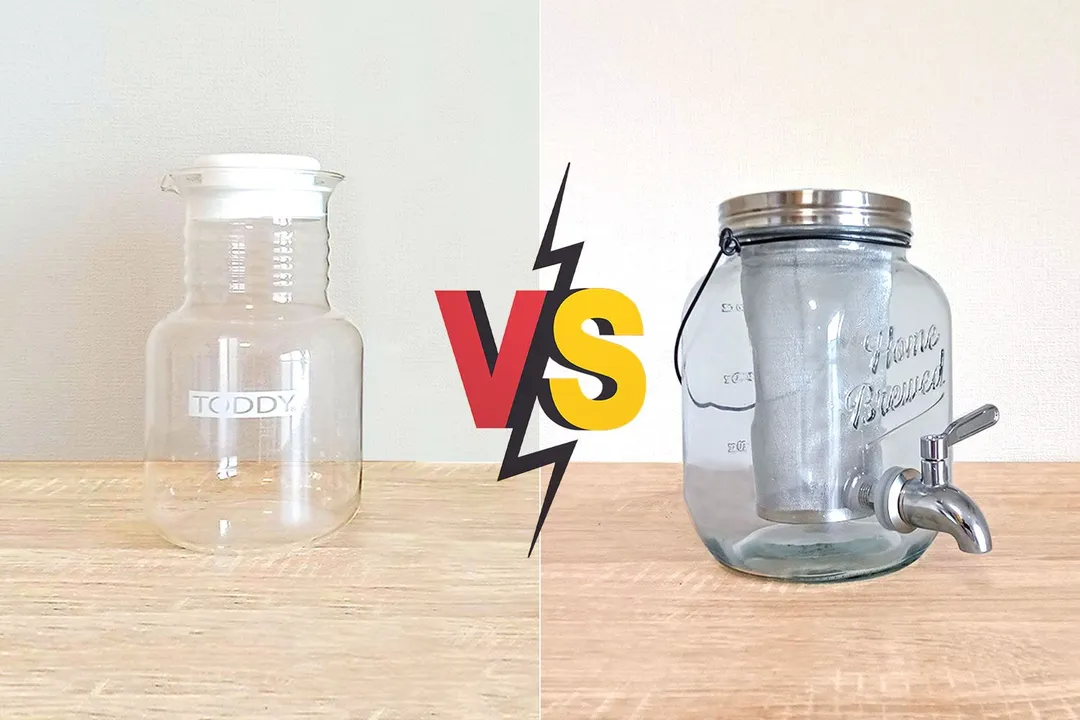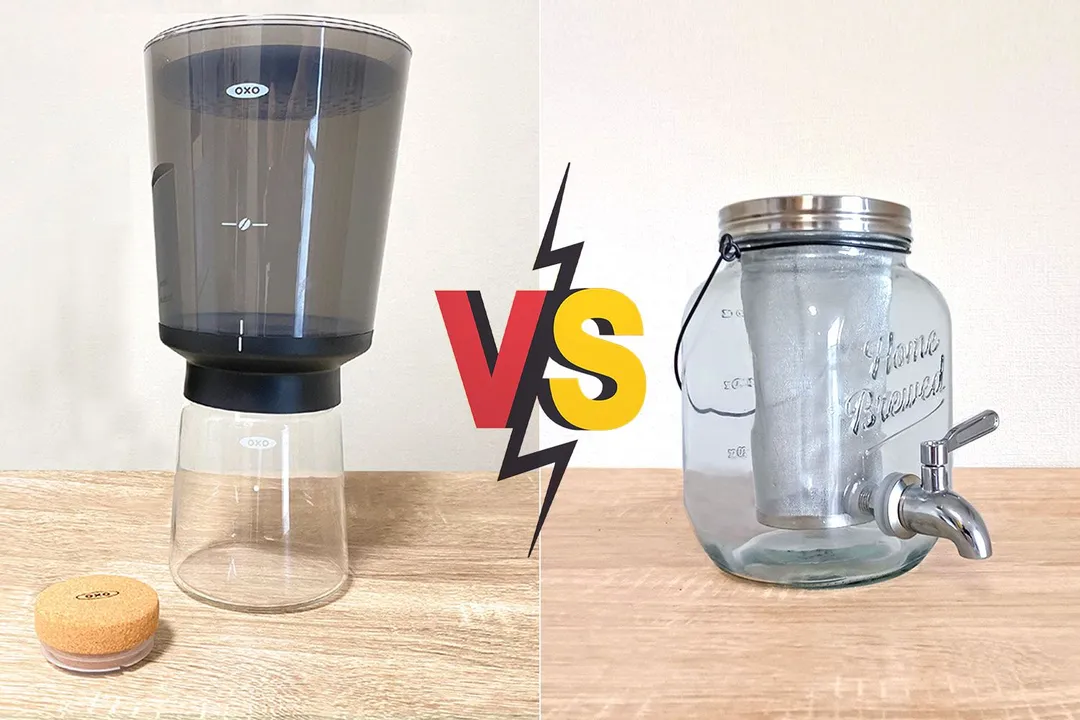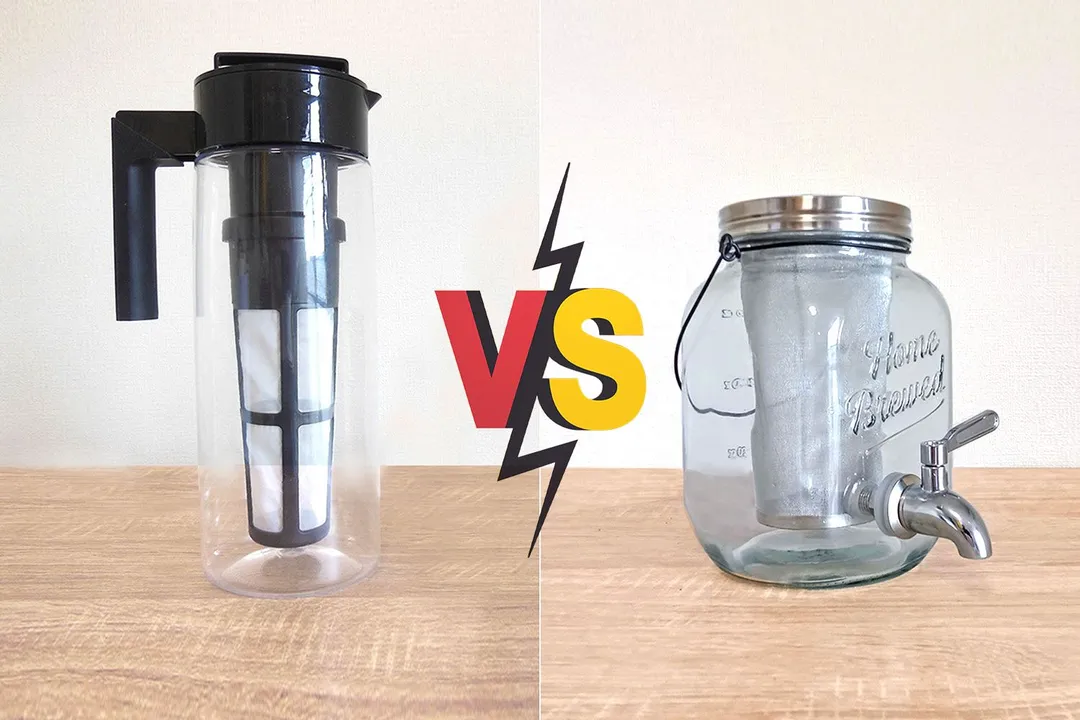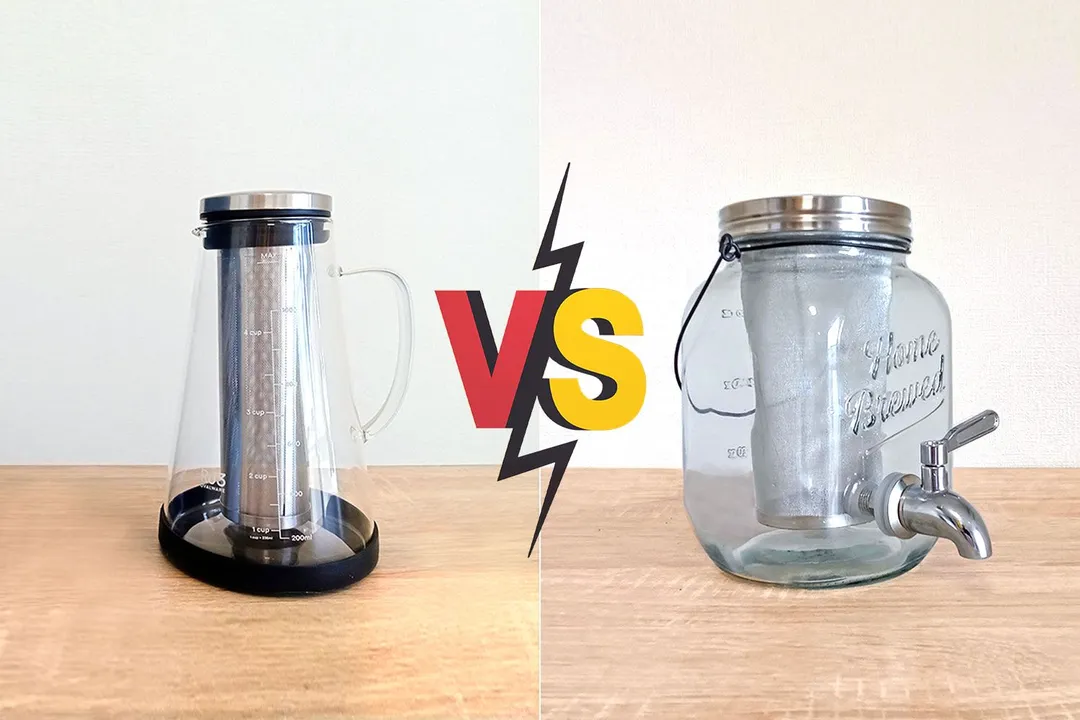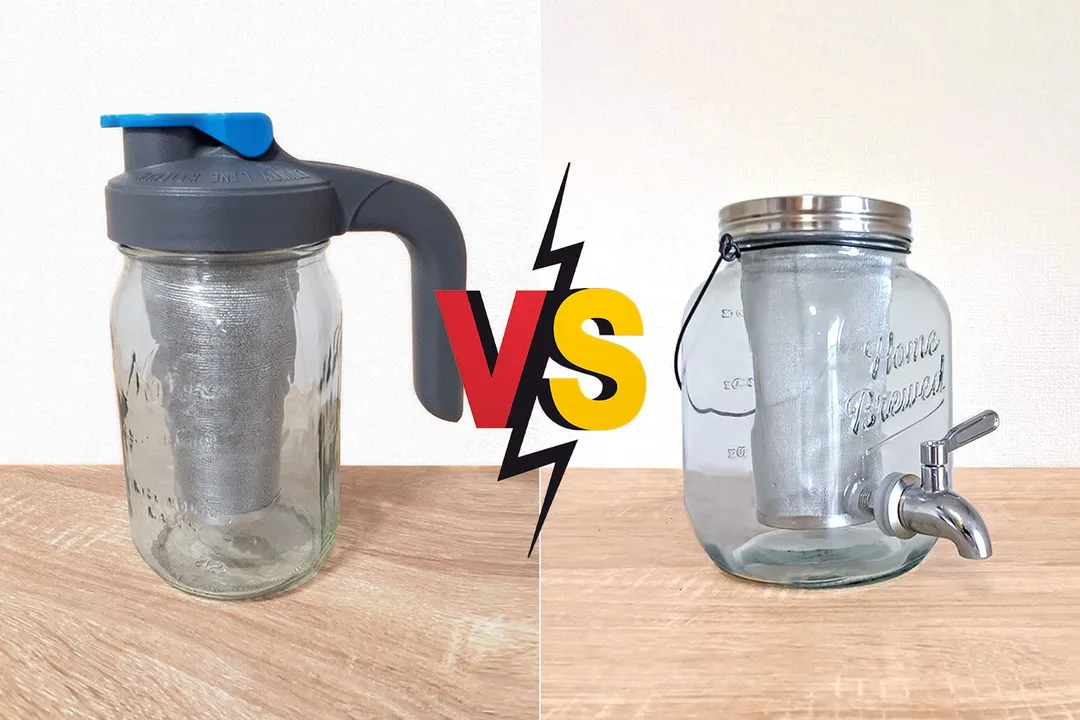Our recommendations are made independently through Research & Testing. We may receive commissions from purchases made via our links.
Cafe Du Chateau vs Willow & Everett Side-by-Side Comparison
Cafe du Chateau cold brew coffee maker vs the Willow & Everett. Two adaptations of a popular design. One succeeds, the other doesn’t.
Cafe Du Chateau
Tested Using Methodology v1.0Willow & Everett 1 Gallon
Tested Using Methodology v1.0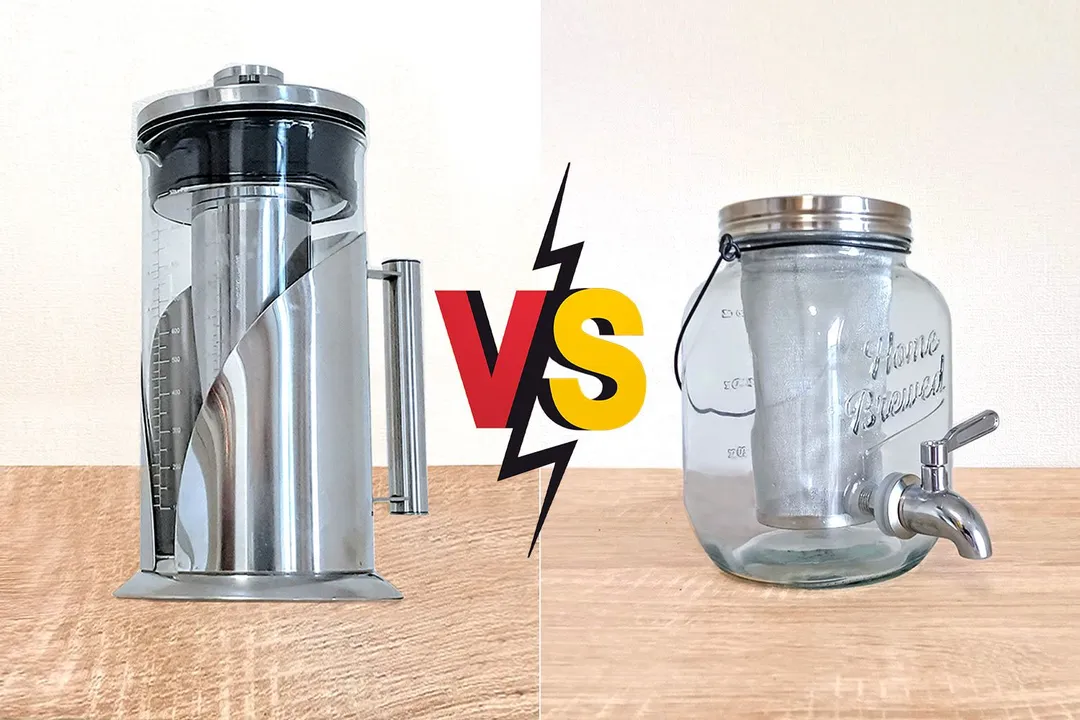
Overall Verdict
The Cafe Du Chateau is an attempt to make a modified French press design work as a cold brew coffee maker. While the brew quality is average, the all round design is flawed. The Carafe is top heavy and badly weighted for pouring. Additionally, the stopper is too tight while brewing and too loose when pouring.
Willow & Everett, on the other hand, is an adaptation of a mason jar. The dispenser tap is a great idea except that 20% of the brew must still be dispensed from the top. The tap or spigot, unfortunately, is not of the best quality and often doesn’t pour well. Furthermore, the glass around the tap is quite fragile. All in all, the one gallon jar is a much better proposition than the half gallon one.
Because of its excellent brew quality, the Willow & Everett is still a brewer that we recommend. However, the Cafe Du Chateau is on our list as a brewer to avoid.
Pros & Cons
- No plastics used
- Airtight brewing
- Well-machined filter
- Funky design
- Brew ratio
- Brew quality
- Tap dispenser
- Weighty and unbalanced
- Lid stopper tough to remove
- Loose decanter lid
- Cumbersome silicone seals
- Lid design
- Weak glass around tap
- Tap is temperamental
- No literature
Key Specs
Where to Buy
*You help support HealthyKitchen101's product testing and reviews by purchasing from our retail partners.
Analysis and Test Results
Brew Quality
Bouquet
Drinkability
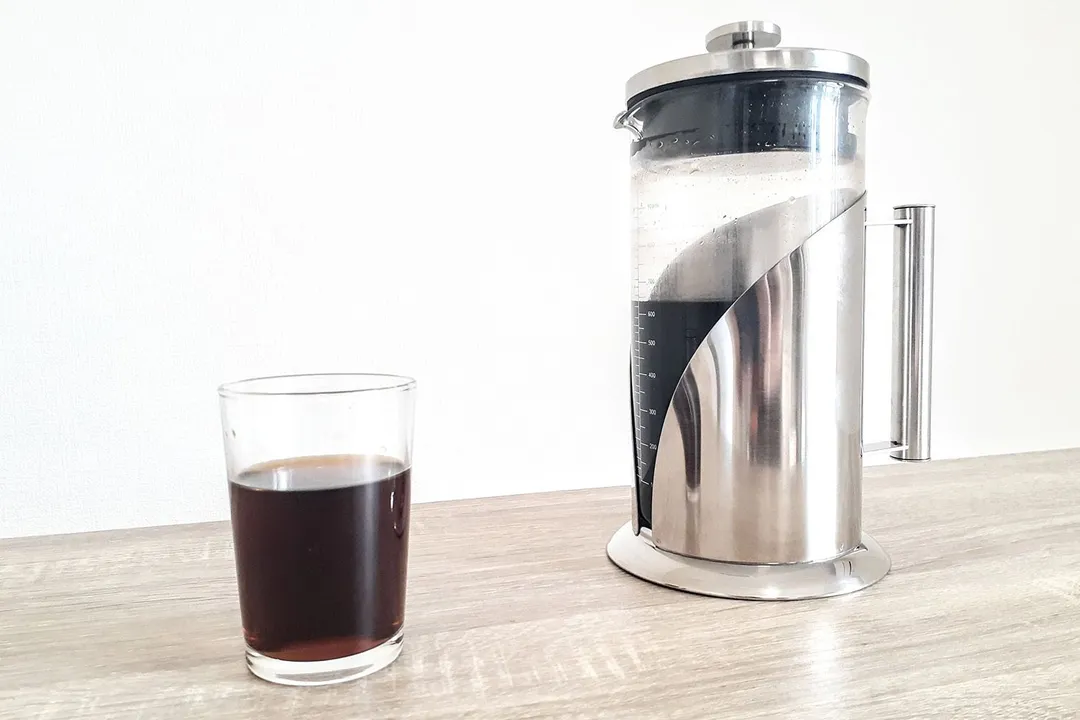
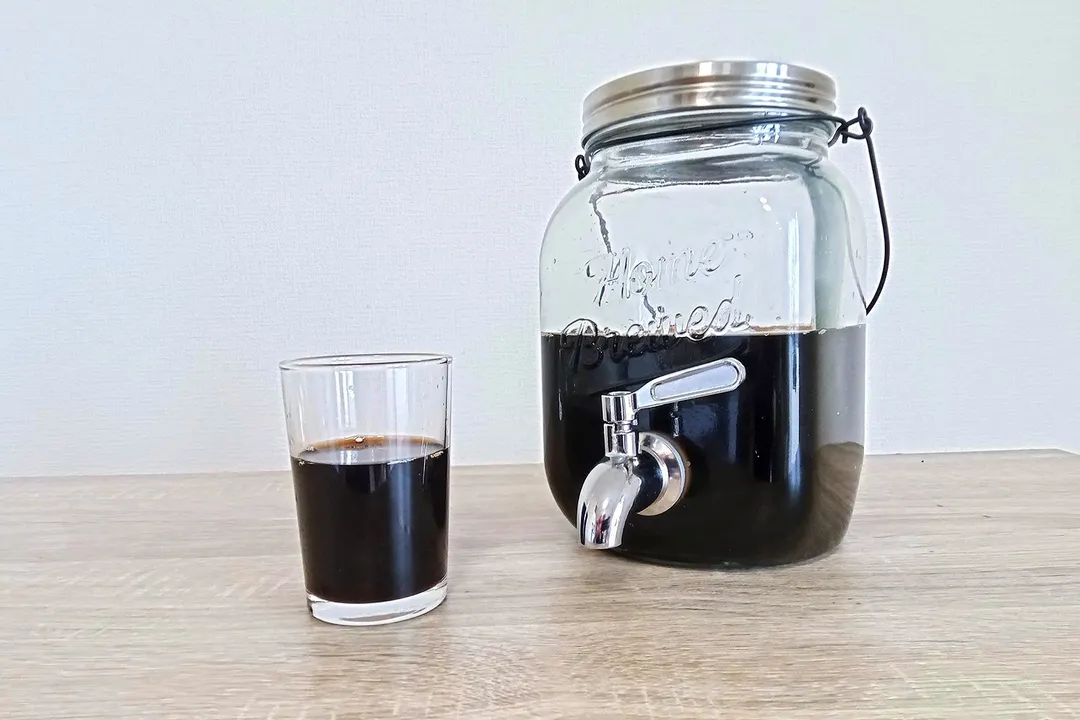
Sediment
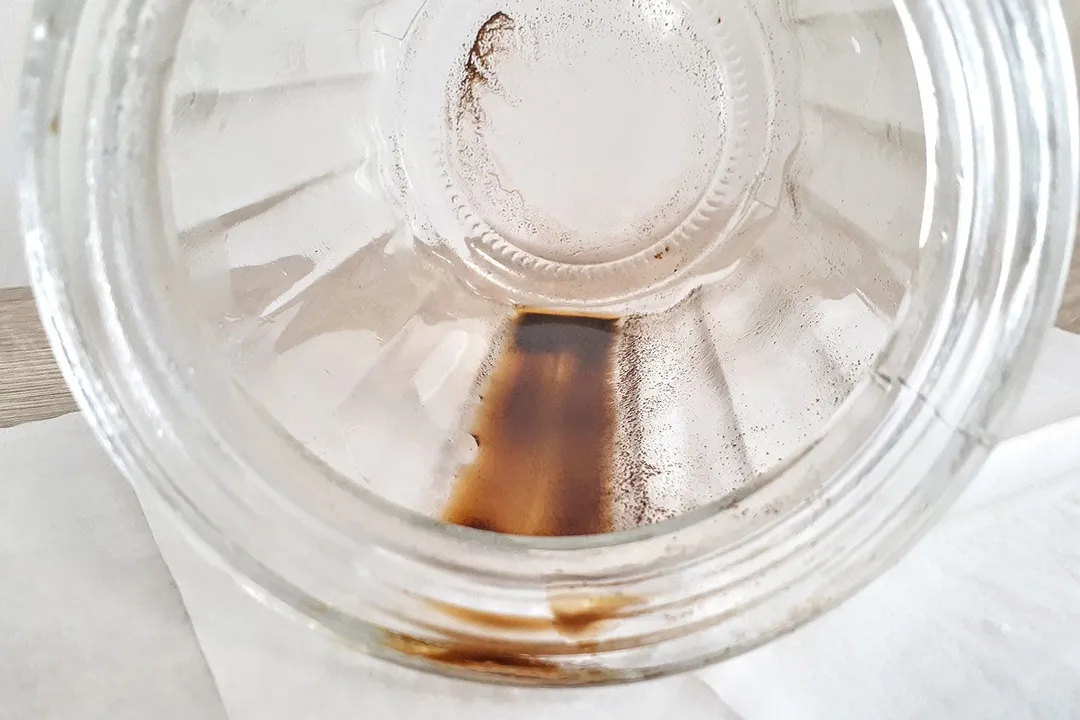
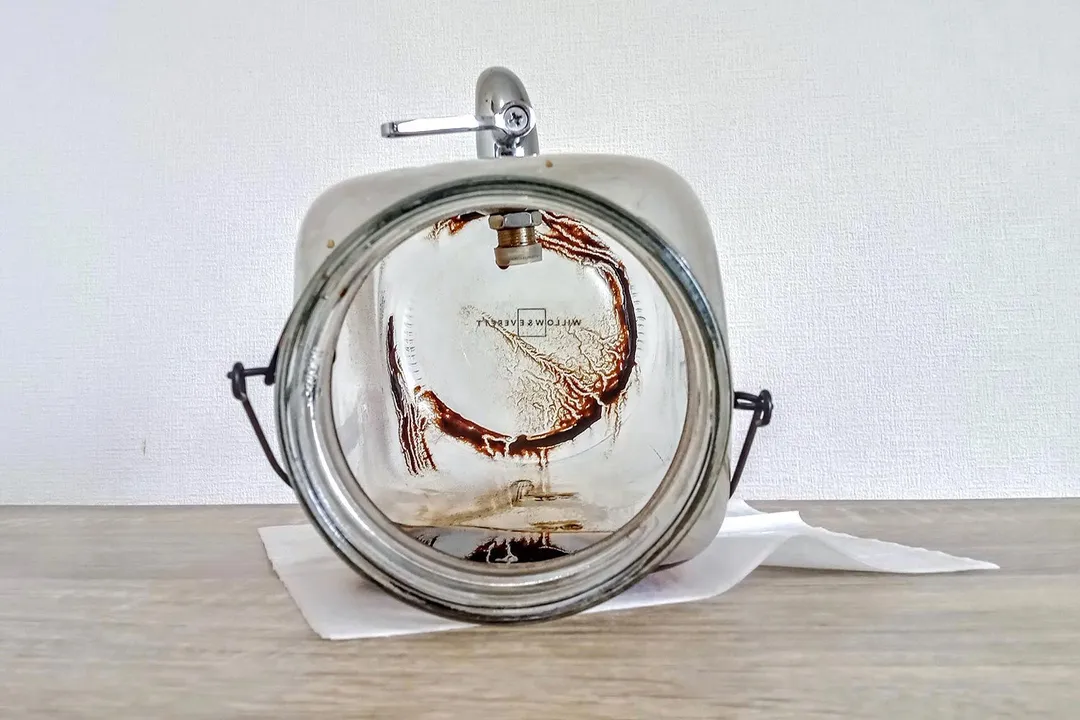
Design
In the Box
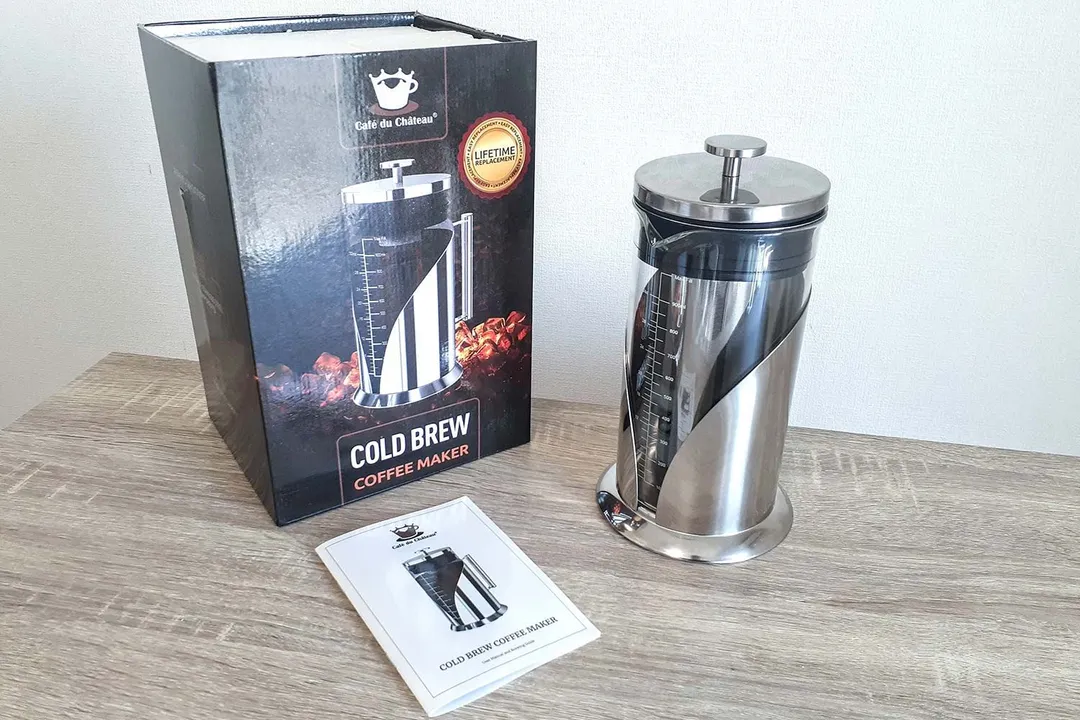

Decanter
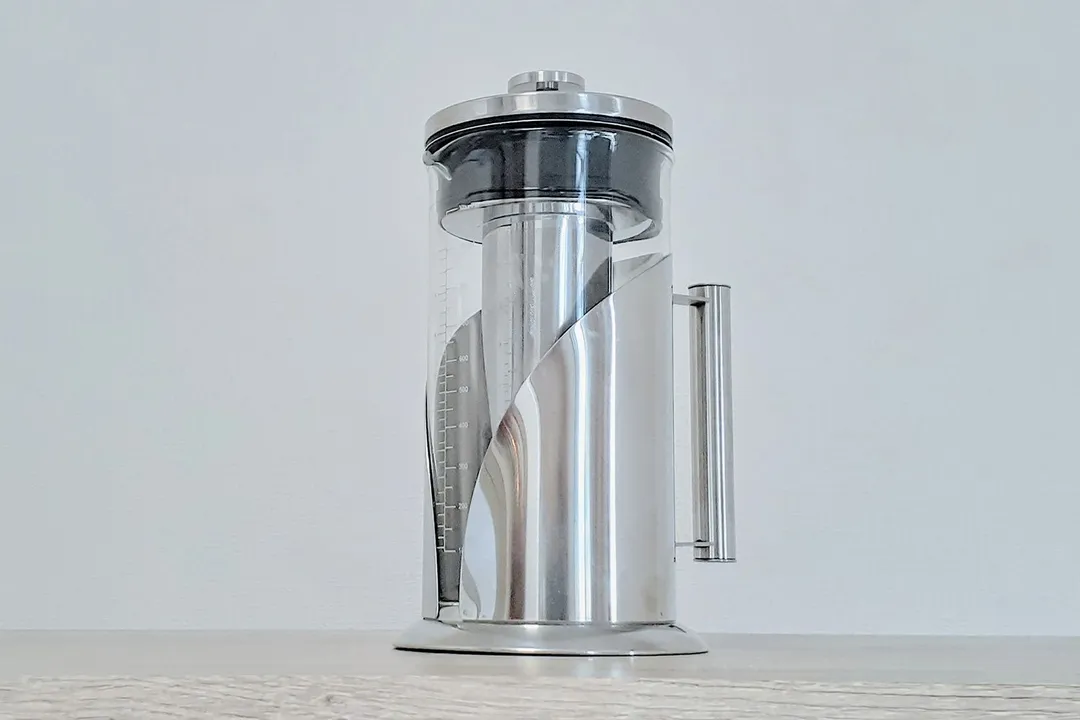
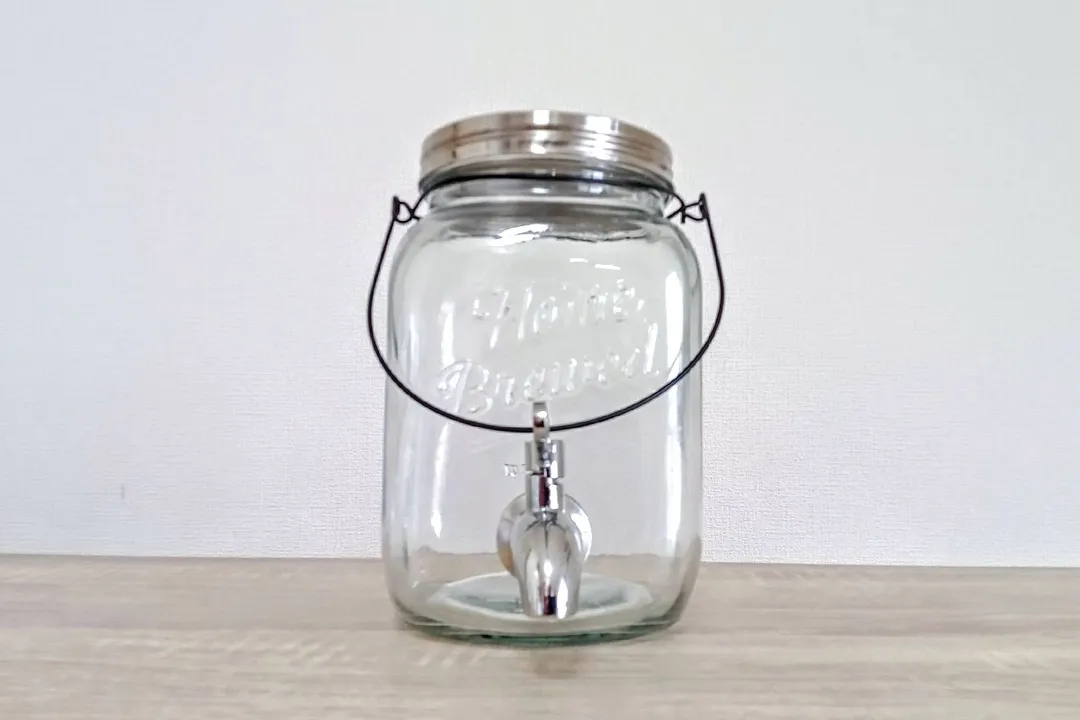
Stopper / Lid


Filter


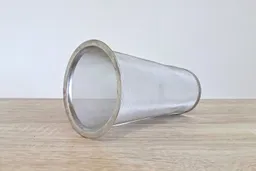

Build Quality
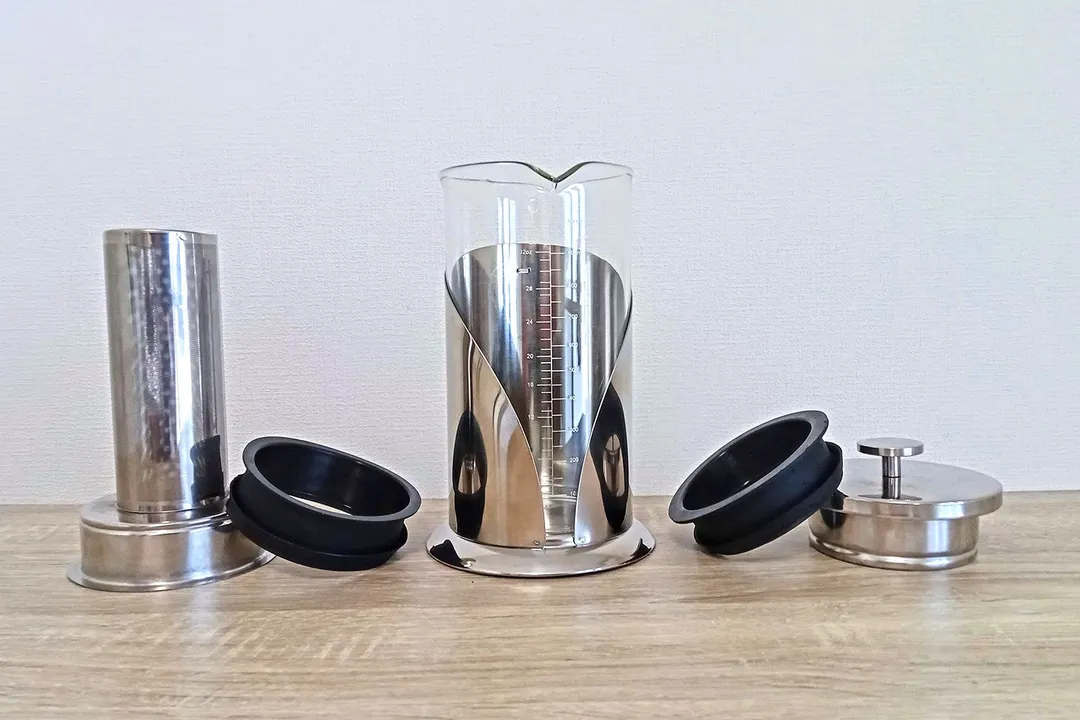

Usability
Brewing



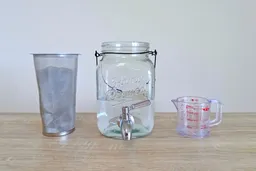

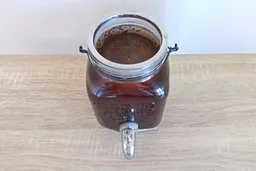
Decanting
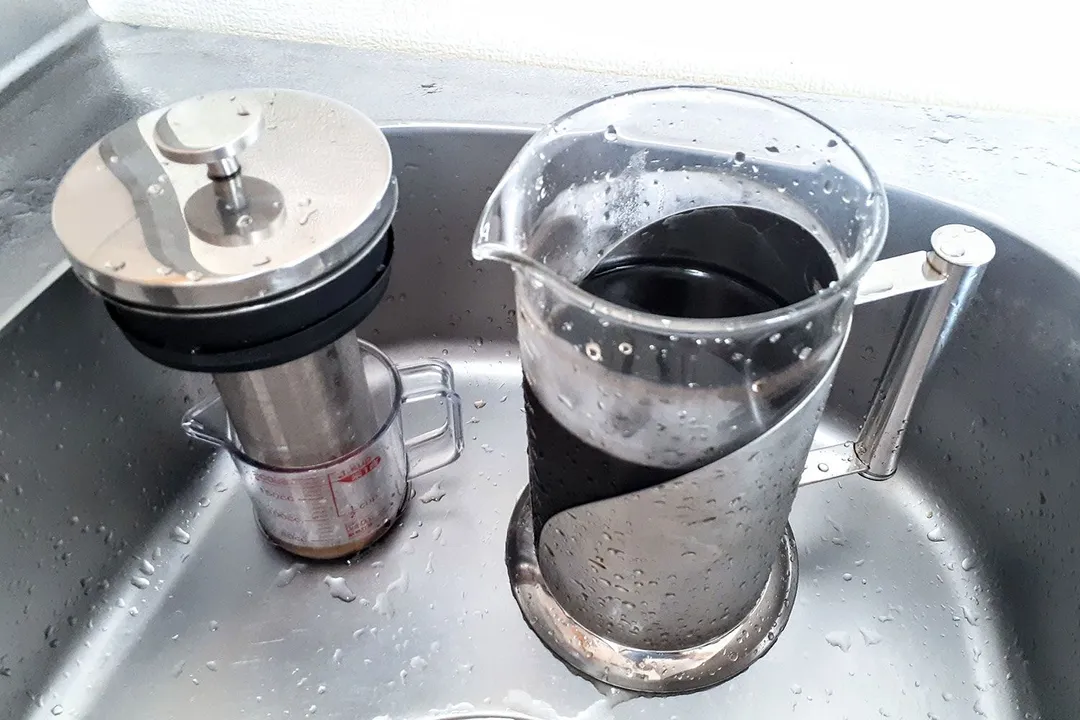
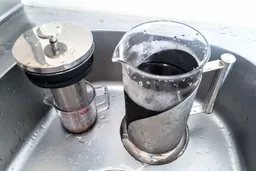
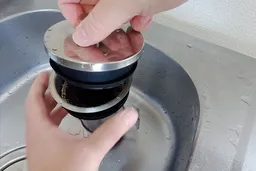
Cleaning and Storage
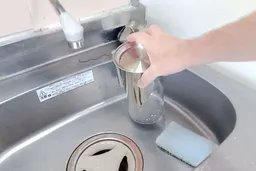

Behind the Comparison
Roger Shitaki is a writer, author, and editor. His niches are household appliances, health & wellness, and travel. He’s a freelance contributor to a Tokyo lifestyle website and a leading ophthalmology magazine in Asia.

